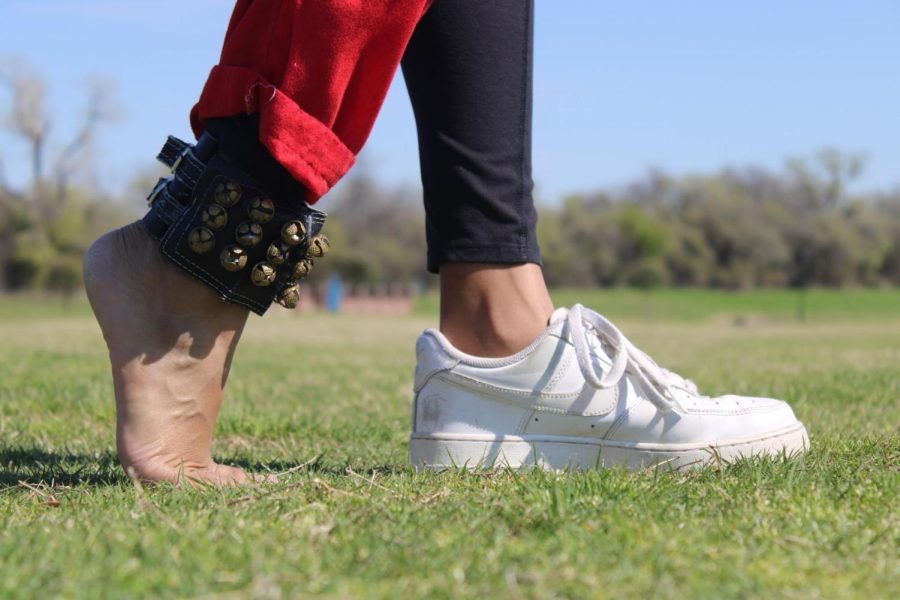Dance is not just artistry, it’s athleticism
Unlike basketball or football, dance is not widely recognized as a sport, rather simply as an art form. The Sidekick staff photographer Shreya Ravi believes that dance should be viewed as an equal to other conventional sports.
March 22, 2023
The stage is lit with the spotlight on me. Standing in my red dance outfit with necklaces around my neck and heavy jewelry in my hair, I move to the beats of the live music.
The bells on my legs jingle as the red ink on my hands and feet start smudging with my sweat. I keep the smile on my face as sweat drips down my forehead and I contemplate the next move in my choreography. At that moment, all that mattered was my connection to the stage.
For the past 18 years, dance has made an impact on my life. From bobbing up and down to music when I could barely stand up to taking up dance seriously as a Bharatanatyam dancer, it has left its mark.
Dance is often considered an art form, but it should be recognized as a sport. The athleticism required for dance is comparable to that of sports like basketball or football. Despite this, many fail to recognize the physical demands of dance, and the hard work and dedication that dancers put into their craft.
Dance is a full-body workout, using almost every muscle in your body, from your toes to your fingertips. Dancers must also maintain their balance and control while performing complex choreography. This requires not only physical strength but mental focus and discipline. All of this needs to be juggled with keeping up a healthy lifestyle while balancing the energy exerted and continuing to give all of their bodies to the craft.

A dancer must constantly be aware of their body, their position in space, their timing and their technique. This mental discipline is comparable to that required of athletes in other sports, such as figure skating.
Dance does not fit into the traditional mold of a sport. As noted in an article published by Sports Manist, the fact that there are no rules in dance makes it impossible to declare any dance competition a true sport contest.
However, this does not mean that dance should not be considered a sport. Dancers are not just artists, they’re athletes. It takes an incredible amount of strength, flexibility and endurance to perform at the highest levels. As a competitive skater and dancer myself, I can vouch for the amount of effort that goes into perfecting choreography or looking effortless while performing.
Furthermore, the lack of a clear competitive structure does not negate the physical demands of dance. Dancers do not always compete against each other, but against their own limitations. This drive for self-improvement and dedication to the craft is a hallmark of any athlete.
The physical demands and risks of dance are comparable to those of other high-impact sports, and the mental discipline required is unmatched in other physical activities. Dance is a physical language that requires strength, endurance, and skill. It is time for dance to be recognized as the sport that it truly is.
Follow Shreya (@shreya3220) and @CHSCampusNews on Twitter.












Malathi Sreedharan • Mar 29, 2023 at 3:55 am
Excellent. Interesting topic. Beautifully expressed.
Congratulations Shreya. I am proud of you.